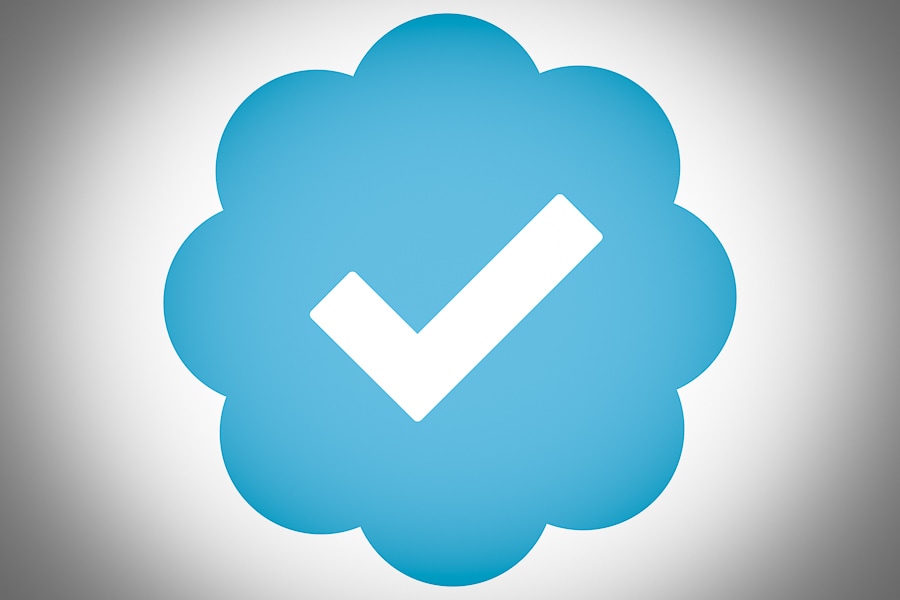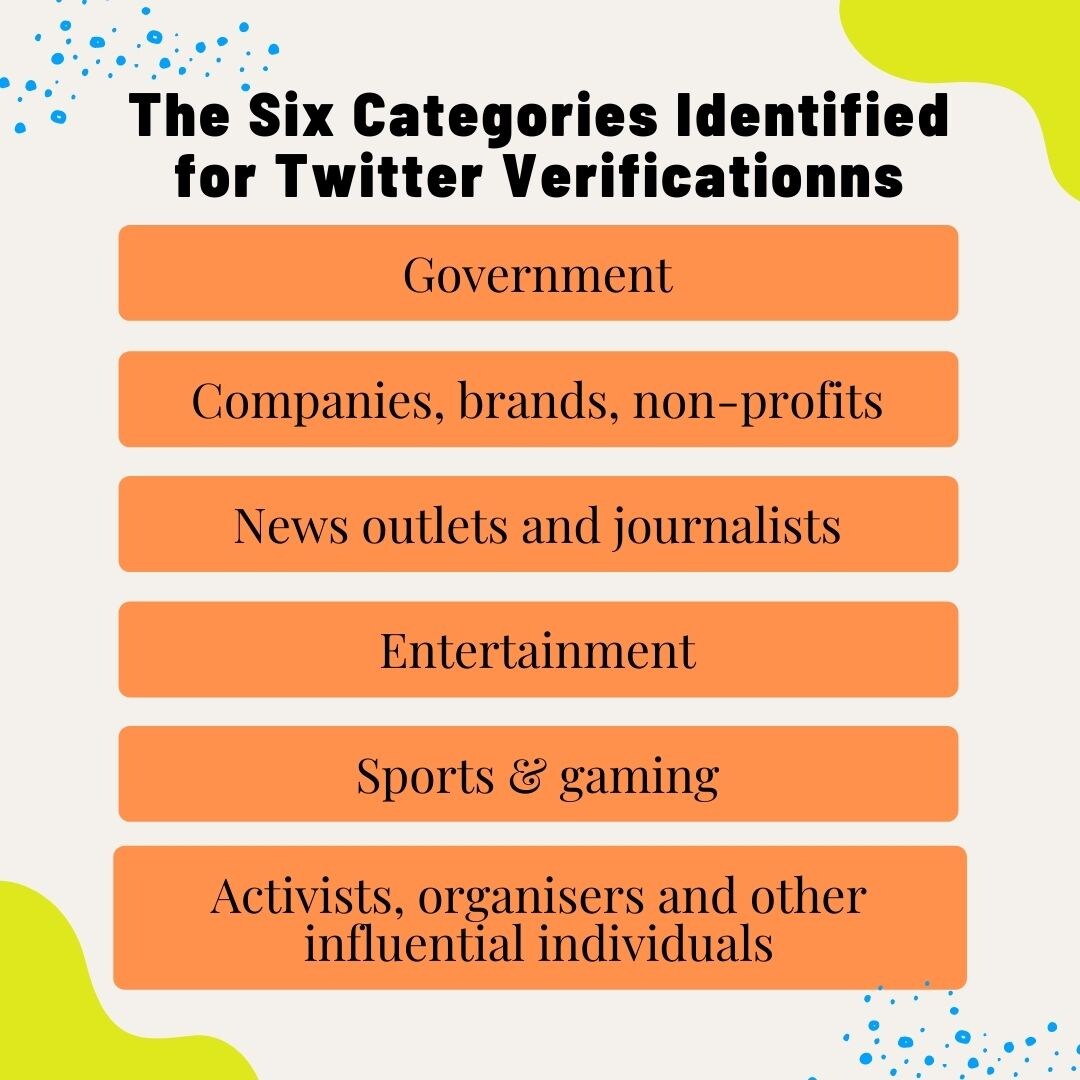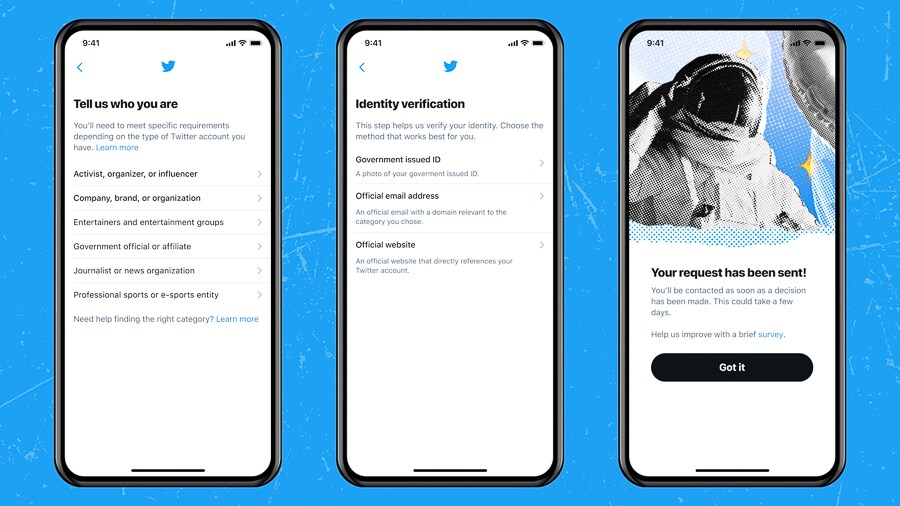
Verified: Twitter to relaunch blue badge of honour
After a hiatus of more than three years, Twitter is once again accepting public submissions to get the coveted blue tick

Aditi covers technology, privacy, surveillance and cybersecurity. You can send tips at aditi.agrawal@nw18.com or at mail.aditi@pm.me. Email for Signal/WhatsApp details.
- West Bengal considering state legislation to act against apps like Sulli Deals: Derek O'Brien
- Parliamentary panel's version of Personal Data Protection Bill endangers privacy: Justice Srikrishna
- BJP MPs successfully thwart attempts to discuss Pegasus issue in IT Parliamentary Committee
- Overview: Facebook, Twitter, Google and Koo file first compliance report under new IT Rules
- PTI sues Centre, calls digital media code state's 'weapon' to control media
- Mobile internet services suspended in most of Haryana until January 30
- Traceability and end-to-end encryption cannot co-exist on digital messaging platforms: Experts
- 'Poorly planned, India not ready for 5G deployment'
- PTI sues Centre, calls digital media code state's 'weapon' to control media
- Facebook, WhatsApp sue Indian government over traceability requirement

Shutterstock
Almost four years after it hit pause on granting its elusive blue badge to the public at large, Twitter has now relaunched its general verification application to everyone around the world. Almost everyone. Okay, many people. Well, six categories of user accounts and then some.
Six types of notable accounts have been identified: government; companies, brands and non-profit organisations; news organisations and journalists; entertainment; sports and gaming; and activists, organisers and other influential individuals. The option to submit verification applications will be rolled out to all users randomly.
Related stories
The move comes almost three months after the Indian Ministry of Electronics and Information Technology made it mandatory for social media companies with more than 50 lakh users to allow users in India to voluntarily verify their accounts. A similar provision was introduced in December 2019 in the impending Indian Personal Data Protection Bill.
However, Twitter’s general verification policy has been in the works since November 2017, was announced in December 2020 and it is only the general verification programme that has been relaunched today.
Who can be verified?
In case of accounts of government officials and offices, Twitter will rely on public references to the account on official government or party websites, or news references in news media. For companies, brands and organisations, and their prominent executives, the accounts must meet two of the three requirements: be present in public indices, have three or more featured references in news in the previous six months, to have a followed count in the top 0.05% of active accounts located in the same geographic region.
For news organisations and journalists to qualify, the account must be public and must refer to the name and official URL of the organisation. Freelance or independent journalists must provide at least three bylines in qualifying publications in the previous six months. Interestingly, qualifying organisations must adhere to recognised professional standards for journalism. On asking if the platform would disqualify or revoke blue badges of publications that do not adhere to such professional standards and actively peddle disinformation, Twitter did not give us a direct answer.

Entertainment companies, as well as official accounts of productions associated with these entities, are eligible if they are connected to a verified organisation and the account’s official website includes a link to the Twitter profile. Individuals’ accounts in the industry are eligible if the website associated with a verified entity includes a link to their profile, and the individual has at least 50 production credits on their IMDB profile, or have three or more featured references in news in the previous six months.
Digital content creators must have “consistently published” original content for at least six months before applying.
In sports and gaming, professional sports leagues, teams, rostered athletes and coaches listed on the official team website, or in sports data services can be verified. Olympians and Paralympians will also be verified. Professional e-sports leagues, rostered players and coaches can be verified if they listed on the official website or if they have had three or more featured references in the previous six months in gaming and e-sports publications.
The criteria for verifying activists, organisers and other influential individuals have been left quite open-ended. It is not clear how impact of such individuals will be gauged, especially given the complex socio-political circumstances that social media operates in. On asking what happens in cases where one person’s activist is another person or government’s criminal (read: Edward Snowden, Chelsea Manning, Disha Ravi), or a government has ordered an account to be suspended, Twitter did not answer.
In addition to these six categories, accounts that show consistent Twitter usage in the previous six months, “generally” abide by Twitter Rules, do not “primarily” post harassing, shaming or insulting content that targets at individual or a group, have significant Twitter activity, and off Twitter notability will be eligible.
To assess significant Twitter activity, the user must have follower count in the top 0.05% of active accounts in the same geographic region, or be in the top 0.05% of active accounts located in the same geographic region in terms of mentions, rate of follower growth, and “other internal signals”, or be “widely credited” for creating a “hashtag movement” that captures a large volume of conversation within a given community. It is not clear what is meant by a hashtag movement, and how Twitter would ensure that coordinated inauthentic behaviour is not rewarded in the process.
Due to the Covid-19 pandemic, the platform has been working with global public health authorities to identify and verify experts tweeting about COVID-19. These verified accounts will not be affected by the new policy. In the same vein, in response to current events, Twitter may verify accounts that do not meet the criteria if they offer expertise, or play a public role in matters of high public interest, or are susceptible to impersonation. Such verification could include public and journalist accounts reporting on natural disasters, proponents and founders of civil or human rights campaigns.
On asked whether there are circumstances in which Twitter will verify accounts of its own volition, Twitter told Forbes India that it requires people to request verification as it is important for people “to consent to being verified”.
In addition, the profile must be active, that is, it must be complete (have a profile name and image), be in active use (user must have logged into the account in the last six months), have a confirmed email address or phone number, and must not have been locked out for 12 hours or 7 days for violating Twitter Rules in the previous 12 months.
However, in case of the six categories of notable accounts, Twitter may make exceptions to the lockout rule. Also, in case of accounts that are at high risk of impersonation, Twitter may make exception for the login requirement. On asking how Twitter will strike a balance between the notability of a user and them flouting Twitter’s rules, the platform said, “We enforce Twitter Rules judiciously and impartially for everyone on out service”.
Parody, newsfeed, commentary, and fan accounts are not eligible for the blue badge. Irrespective of whether accounts fall within the six notable categories, accounts that engage in platform manipulation and spam, as well as those that are associated with posting hateful content or engaging in coordinated harmful behaviour are not eligible.

Source: Twitter
How will the verification process work?
The application process will be available in Account Settings in the app. Users will have to update their app. Users will select one of the six categories of notable accounts. To verify their identity, users will have to submit a photo of their government issued ID, or an official email address, or an official website that directly references the user’s Twitter account.
A global staff of “trained agents” will review each application against Twitter’s official policy, the company told Forbes India via email. This staff will assess notability across different countries, regions and cultural contexts.
Twitter did not specify what kind of government documents it would accept. It just said that governments IDs are just one way of verifying identity. Facebook, under its verification policy, accepts multiple documents across countries including drivers’ licences, passports, national identification cards and others for individuals, and phone or utility bills, certificate of formation, tax exemption documents, etc. for organisations.
In response to a question by Forbes India, Twitter clarified that it will not receive or store a copy of a user’s ID document. Instead, it will rely on third parties who will verify the authenticity of the ID. These third parties, as per Twitter, will verify the authenticity of the submitted government ID and provide the platform with limited information and a platform so that Twitter can confirm the user’s eligibility. Forbes India has asked Twitter about what kind of third parties are included.
Twitter directed Forbes India to its privacy policy when we asked if this data could be turned over to law enforcement authorities and governments in response to legitimate judicial or government requests for information on users. According to Twitter’s privacy policy, Twitter “may preserve, use, share, or disclose your personal data or other safety data if we believe that it is reasonably necessary to comply with a law, regulation, legal process, or governmental request”.
On asked which email address freelance journalists and activists can submit, Twitter said, “In general, we are thinking about debadging as a more active part of the process than we have in the past”. Such cases will be taken up on a case-by-case basis.
The process will use both automated and human review processes. It is not clear whether all application will be processed through automated means and flagged profiles reviewed by human moderators, or if a certain category of applications will be earmarked for human oversight to begin with.
On submitting the application, Twitter will usually respond in a few days but it could take up to a few weeks depending on how long the queue of open application is. If application is approved, the blue badge will be automatically added to the user’s profile. After receiving the decision, users can reapply after 30 days.
Bad behaviour means no verified status
Twitter may remove the verified badge at any time with no notice when accounts impersonate people or mislead people, have repeat violations related to engagement in hateful and abusive behaviour, glorification of violence, platform manipulation, etc. In case of repeated violations, the removal will be assessed on a case-by-case basis by human reviewers. It remains to be seen if Twitter will effectively implement this policy, and not just in countries such as the US where freedom of speech is practically sacrosanct, but in other nations where authoritarian regimes routinely pressurise or are in cahoots with social media companies to suppress legitimate speech.
In addition, if users change their Twitter handle, do not log in to their Twitter account for six months, or leave the position that made them eligible for verified status, Twitter may revoke the badge. Accounts that impersonate the verified badge may be suspended.
Forbes India has asked Twitter what happens in cases where verified accounts are temporarily suspended for violation of Twitter rules. Do they preserve their verified status after the suspension period is over? It is also not clear what happens in cases where verified accounts are blocked in response to government orders or requests.
Revised general verification programme has been in the works for three years
The microblogging platform had first opened general verification in October 2016 but had paused the programme in November 2017. At the time, it had said that the badge had become an “endorsement or indicator of importance” instead of being used to “authenticate identity & voice”. While suspending the programme, the platform accepted that it gave verified accounts “visual prominence on the service which deepened this perception”. This became worse when verified accounts of general users, whom Twitter did not endorse, landed up becoming more prominent.
The work on a new authentication and verification programme had started in November 2017 itself but in the interim period since then, the platform chose to focus on “protecting the integrity of public conversation” around critical moments such as the 2020 US Presidential election. In November 2020, it sought public feedback on a draft verification policy which it incorporated in the final policy released in December.
The new policy came into effect on January 22, 2021 and since then, Twitter has been removing the verified badge from inactive and incomplete accounts.
Academics, scientists, religious leaders are next
While they are not recognised right now, Twitter will consider adding them to the policy later this year.
The company will introduce a way to identify and label automated accounts in the next few months, followed by a way to memorialise profiles of people who have passed away. It is also considering introducing an “About” page to users’ Twitter profile.







